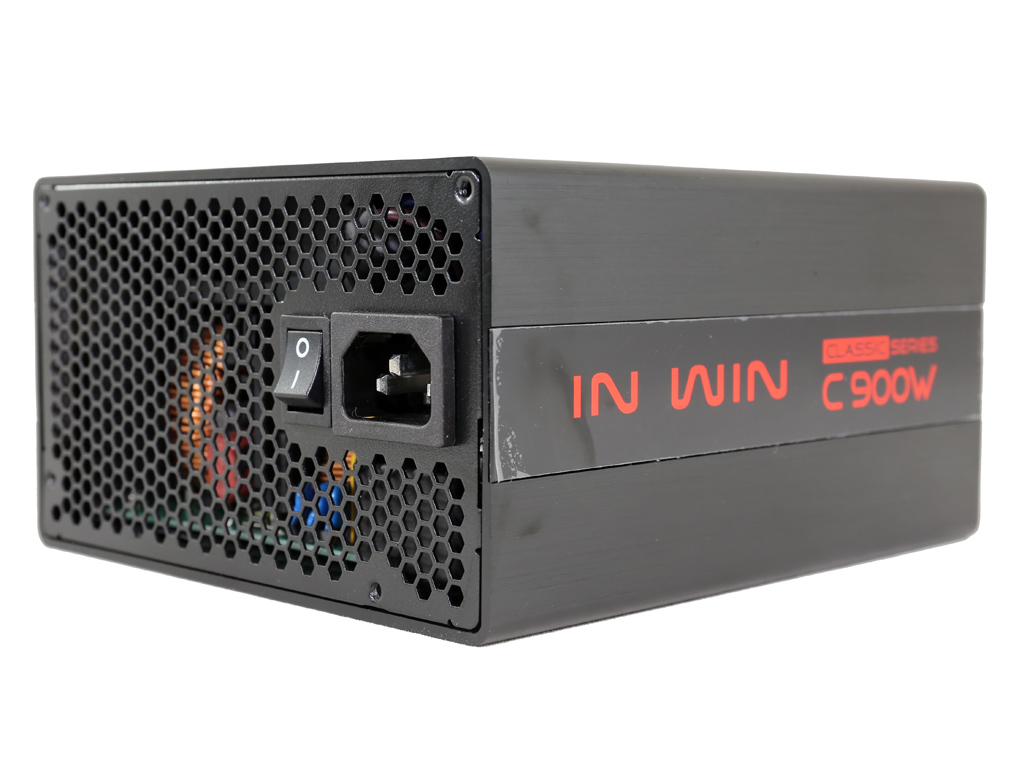In Win Classic Series C 900W PSU Review
In Win's Classic series consists of only two members featuring 750 W and 900 W capacities. The C900 is our test subject today. Besides a great finish and good looks, it promises reliable and quiet operation, along with high efficiency.
Why you can trust Tom's Hardware
Pros, Cons, And Final Verdict
In Win knows how to differentiate from the competition, even when it follows traditional design guidelines. The C900 sports a fantastic chassis with a top-quality finish. But that's not enough to frighten other PSU vendors. Seasonic, Super Flower, CWT, Flextronics, and other OEMs have raised the performance bar too high, making it difficult for smaller manufacturers like In Win to follow. The C900 might feature quiet operation and good ripple suppression, but its load regulation is mediocre, the registered hold-up time doesn't satisfy the ATX spec's requirements, and the transient response performance is nothing to write home about.
We get the feeling that In Win paid more attention to this unit's aesthetics than it did to tuning the platform for its daunting face-off against recognized incumbents. Moreover, a huge price tag doesn't give the C900 a chance to make its case. Now it has to fight off formidable units like the EVGA 850 P2, Seasonic's Silent Snow 750/1050, and Corsair's RM1000i/x.
The cable configuration is poor as well. Besides the limited number of PCIe connectors, you have to sacrifice one of them if you need to use the pair of provided EPS cables. This is simply unacceptable in a 900 W high-end PSU that costs $190 bucks.
Alright, so we really harped on the C900's negatives, which are difficult to let slide. There are positives, though. Besides the quiet operation and good +12V ripple suppression, the C900 boasts high efficiency under light loads, good build quality, reliable filtering caps, and a fan that should last a long time. The unit's long warranty clearly indicates In Win's confidence in its platform, although the high-end competition provides even more warranty coverage, stretching out to 10 years. In any case, seven years is a pretty long period for a PSU. After that long, there's a good chance you will have already upgraded.
To make the C900 viable, In Win needs to make several modifications to its platform. For starters, a proper cable configuration with at least six PCIe and two EPS connectors available at the same time is required. In the performance section, load regulation needs to be improved and efficiency under normal loads requires a boost to get closer to the 80 PLUS Platinum standard in real-life conditions. Larger bulk caps should offer a proper hold-up time in the APFC section, while on the secondary side the addition of over-temperature protection should help with reliability.
As you may suspect, all of those changes require a partial redesign of the whole platform, which is easier said than done. But the competition is tough, and an expensive product like the C900 needs to follow closely if it wants to have a chance of survival in the PSU market.
MORE: Best Power Supplies
MORE: Power Supplies 101
MORE: How We Test Power Supplies
MORE: Picking The Right Power Supply: What You Should Know
MORE: Computer History: From The Antikythera Mechanism To The Modern Era
MORE: All Power Supply Content
Get Tom's Hardware's best news and in-depth reviews, straight to your inbox.
Follow us on Facebook, Google+, RSS, Twitter and YouTube.
Current page: Pros, Cons, And Final Verdict
Prev Page Performance, Performance Per Dollar, Noise, And Efficiency Ratings
Aris Mpitziopoulos is a contributing editor at Tom's Hardware, covering PSUs.
